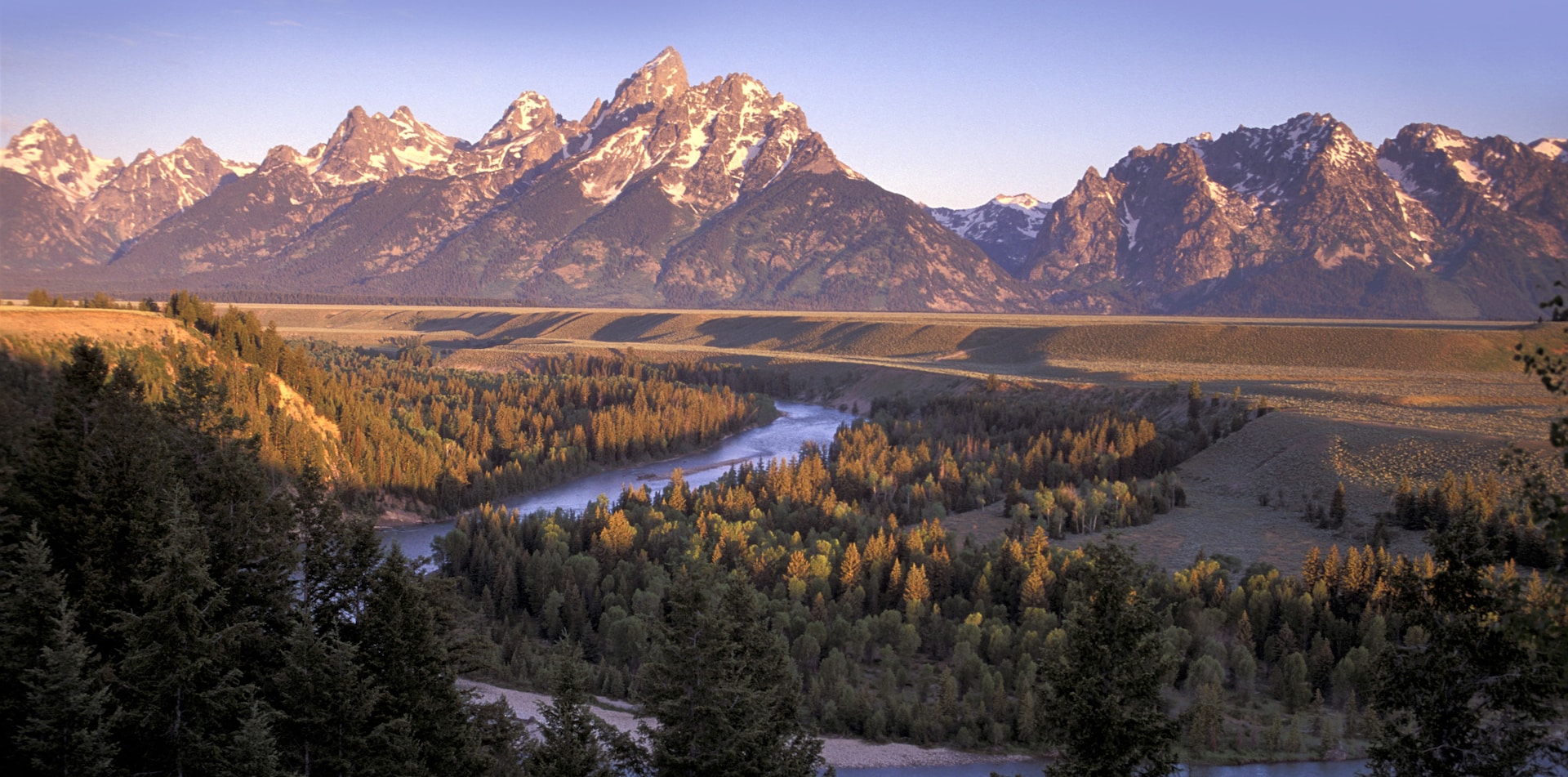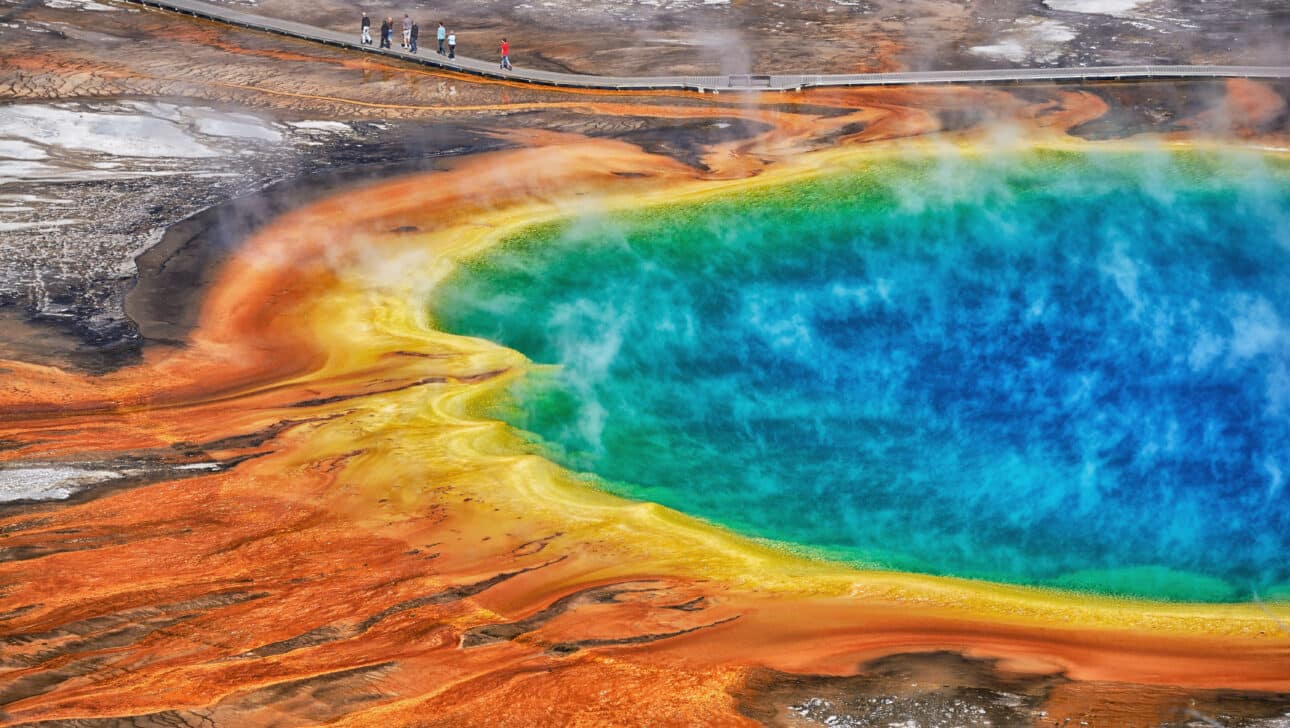The stars of the Greater Yellowstone Ecosystem haven’t dimmed since the inception of its iconic marquee attractions. Yellowstone and Grand Teton National Park earned the nickname ‘the American Serengeti’ for the animals that live underneath their many-pinnacled peaks, graze in the Lamar and Hayden valleys, and visit the edge of rushing rivers and tranquil alpine lakes.
In 1872, Ulysses S Grant established Yellowstone National Park, marking the start of the country’s and the world’s national parks. A clarion call to action sparked the event: the Hayden Expedition presented congress with the startling beauty and natural treasures they found in the wilds of the west. More than a century and a half after their discovery by intrepid wayfarers, Yellowstone and the Tetons keep their eternal beauty- with distinct personalities that change with the seasons.
Petrified forests, gurgling geysers, fizzling fissures, bubbling mud pots, and steaming hot springs fill in the details, while the Grand Canyon of Yellowstone, Jenny Lake in the Tetons, and Yellowstone Lake bring color and texture to the surroundings. What better way to experience the vast natural riches of the American west for yourself than to explore on foot? Check out a few of our favorite walks through these epic parks.
Old Faithful and the Geysers
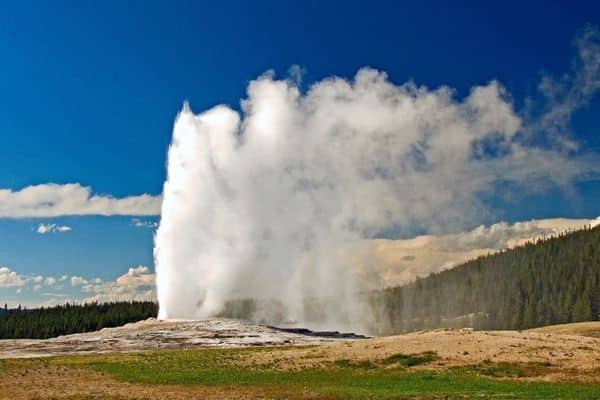
Old Faithful is just one of over 500 geysers found inside the park’s borders. It’s part of the Upper Geyser Basin, an area with the highest concentration of geysers on Earth. Yellowstone sits on a volcanic caldera the size of Rhode Island with enough magma to fill the Grand Canyon almost 14 times. The heat from below fuels the spectacular show-stopping eruptions above, creating magical moments that bring people from near and far.
Scores of geysers erupt on their own schedules in the Upper Geyser Basin. Our guides have in-depth knowledge of the area and take you beyond the routine to their favorite overlooks, literal and in-the-know hot spots, and trails that skirt colorful mud pots. The features above the ground create an exotic landscape, and clear thermal pools act as windows into the world beneath your feet. Getting around on foot isn’t a challenge here, as boardwalk loops, accessible trails, and easy-to-reach vistas give Classic Journey’s small groups room to explore.
West Thumb Geyser Basin
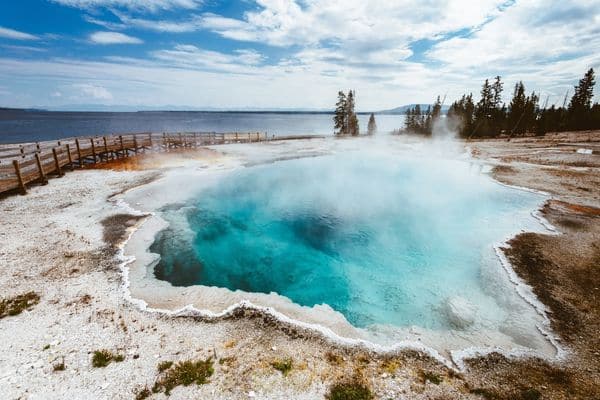
More than half of the geysers on the planet dot the different basins of Yellowstone. The West Thumb Geyser Basin, reached by a stunning walk along Yellowstone Lake, shows another side of the park after a morning spent being introduced to its more iconic geothermal features.
During the spring, fields of wildflowers blanket the area; in the summer, bison herds come to the lake to drink. In the fall, elk bugles sound through the glades of red, yellow and burnt-orange aspen groves, signaling mates in a rite of nature.
The West Thumb Basin sits on the shores of the lake, and at different times of the year, some of its active geysers sink below the water’s surface. Reached by a boardwalk trail, hot pools colored with an artist’s palette stand out against the deep blue waters of the lake and the lofty peaks of the Absaroka Mountain Range in the distance. Early trappers and explorers christened the different springs with names like the Abyss Pool, for its seemingly unending depth, and Black Pool, a misnomer given that the turquoise water is crystal clear. The Fishing Cone lends itself to the park’s past, its given name taken from the practice of cooking freshly caught fish in its boiling waters.
Jenny Lake
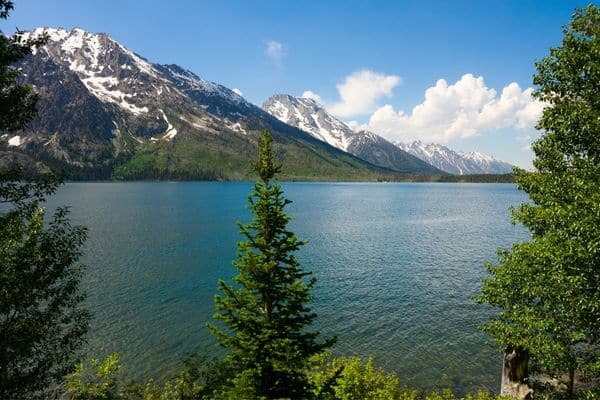
Jenny Lake mirrors the blue sky above against the silhouette of the sheer peaks overhead. The sight gives pause, sparks the imagination, and echoes with the awe of those that came before. The Hayden Expedition named the glacier-fed lake after Jenny Leigh, a Shoshone woman that aided the group alongside her husband, Richard Leigh.
Walking routes here include a loop around the lake and a trail to Inspiration Point, a fitting name for an outlook that passes Hidden Falls, a cascade of water dropping from a hundred feet above.
The youngest range in the Rockies, the Grand Tetons tower 7,000 feet above the lakes and valleys that make exploring the national park an adventure. Jagged snowcapped peaks stand in
unison, earning them the apt moniker ‘the Mountains of the Imagination.’
Classic Journeys leads our clients through Grand Teton National Park in style. Our first day offers the option of exploring by horseback, an experience that takes you away from the beaten path and on trails that once captivated Ansel Adams. Adams, together with his friend and painter Georgia O’Keefe, brought the beauty and landscapes of the American West to the top of travelers’ lists during the height of the 20th century with their pictures and paintings.
Mammoth Hot Springs
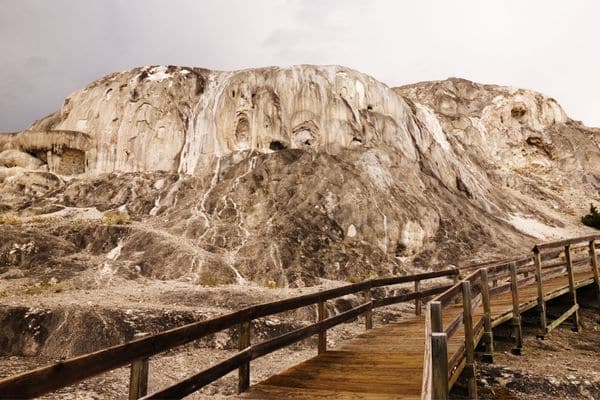
Visiting Yellowstone’s Mammoth Hot Springs takes you a step back in time. It is located close to the north gate to the park, the entrance where robber Barron EH Harriman decided to deposit travelers on the western line of his Northern Pacific Railway, established in 1883. The first stop inside the park was Mammoth Hot Springs and its present-day historic district. A restored hotel built in 1883, an army fort, and a historic post office give postcard glimpses of life during the first forays of travel in the west. Guests of the hotel took stagecoaches during day trips that covered loops inside the park.
Streams of white steam signal your arrival at the springs. A group of 50 fissures form springs that rise out of limestone rock. The steam is corrosive, melting the stone into sculptures while the different minerals brought to the surface add color. Walking the tiered upper and lower terraces takes you through terrain resembling frozen falls, salt flats, and stalagmites hanging in the air without a cavern around them or a ceiling to hold them in place.
Yellowstone’s Grand Canyon & Lower Cascade Falls
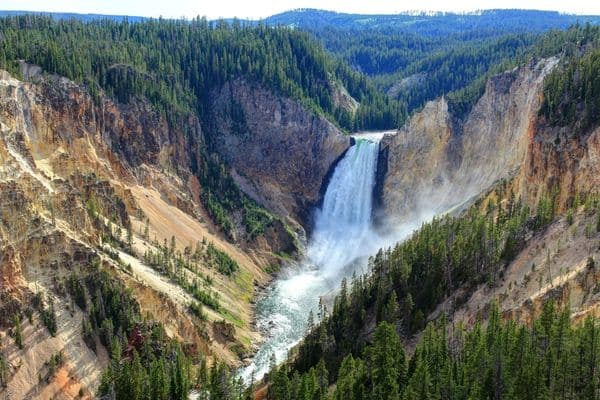
Painter Thomas Moran and photographer William Henry Jackson of the Hayden Expedition were the first to capture the depth of the 20-mile canyon and the grandeur of the majestic falls during the 40 days spent in the present-day park. The Lower Cascade Falls rushes over a precipice and fall 300ft to the Yellowstone River below, where it continues on its journey as the longest free-flowing river in North America.
Different viewpoints focus the attention on the ever-changing scenery that Ansel Adams shed new light on during a whirlwind tour of the west in June of 1942. Seeing the sprawling canyon and plummeting falls in person is an awe-inspiring experience, revealing the spirit of the park and its legacy as the premier national park in the United States and the world at large.
Are you ready to immerse yourself in these incredible National Parks? Join us on foot and at eye level to experience these amazing hikes and scenic views first-hand. Start planning your trip of a lifetime by contacting our Travel Experience Team.
